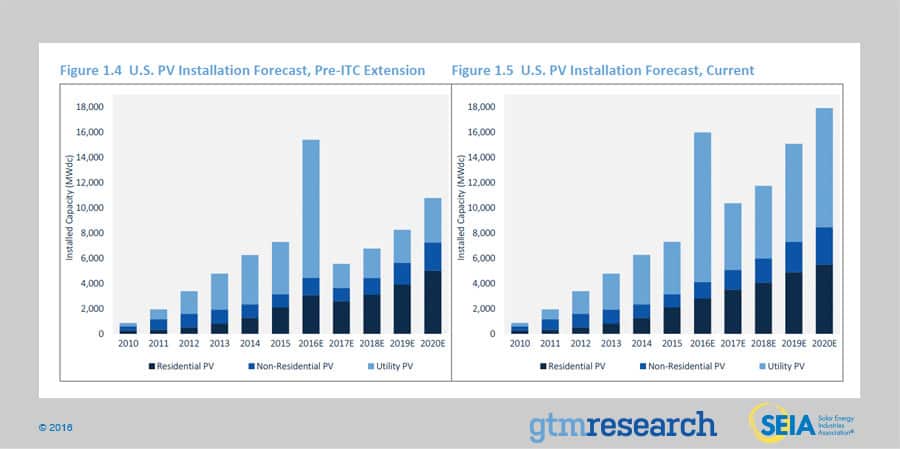A look at the ERCOT region of Texas (85% of TX power market) highlights this. While Texas has not added a meaningful amount of solar, it continues to lead in wind. It ended 2015 with 16.2 GW of installed capacity, and expects to add 7.9 GW in 2016, that's almost a 50% increase in a power source that averaged a 35% capacity factor in 2015. 2016 will also be the first year of significant utility-scale solar installations, at 2.1 GW.
Consider that ERCOT projects just a 1.3% CAGR in total power demand through the decade:

On an annualized basis, a 7.9 GW wind capacity addition, at a 35% CF, would add 24 Twh of generation, which is half of the total demand growth expected over the next 10 years. No amount of coal retirements can offset that, so natural gas has to lose this war.
Out west, it's a similar story for solar in California. California accounts for the great majority of solar power capacity in the US, and it will be the largest beneficiary of the nearly 12GW in new utility scale solar installations expected in 2016.

Solar threatens gas generation three ways....it's happening during peak A/C demand periods, it is predictable, and it would pair well with battery storage, if the storage technology advances enough. It is also getting cheaper, faster than other renewables.
Unfortunately, the backdrop for this cannibalization is a stagnant US power demand market, and the war on coal hasn't been enough to offset the losses, inasmuch as gas supply has grown so quickly that prices have accomplished the market share destruction for coal that the EPA was tasked with. If gas prices were to rise much, there is still substantial market share that coal could recover, and the consequent rising power prices would make renewable energy investments more attractive. And time is against hydrocarbons, with Moore's Law seemingly in effect for solar installation costs.
ERCOT prices have been abysmally low, and the consensus is for more of the same through this summer.
